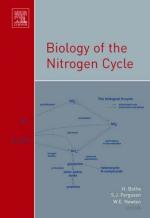|
This section contains 674 words (approx. 3 pages at 300 words per page) |

|
All plants and animals need certain organic nitrogen compounds to live. During the 1700s, scientists knew that nitrogen is obtained by plants, which use it to make proteins. But no one was sure where plants got their nitrogen. One obvious possible source is air, which contains nearly 80 percent nitrogen. But in the late 1700s, H. B. de Saussure discovered that most plants cannot extract, or assimilate, nitrogen from the air. Instead, he concluded, they must absorb it somehow from the soil through their roots. Most people thought that nitrogen had to be restored to the soil by the addition of humus, manure, or other decaying organic matter. Farmers routinely added these fertilizers to their soil to supply nitrogen compounds in a form that plants could use.
Then in the mid-1800s, Jean Boussingault proved that plants could flourish without organic fertilization as long as other sources...
|
This section contains 674 words (approx. 3 pages at 300 words per page) |

|


